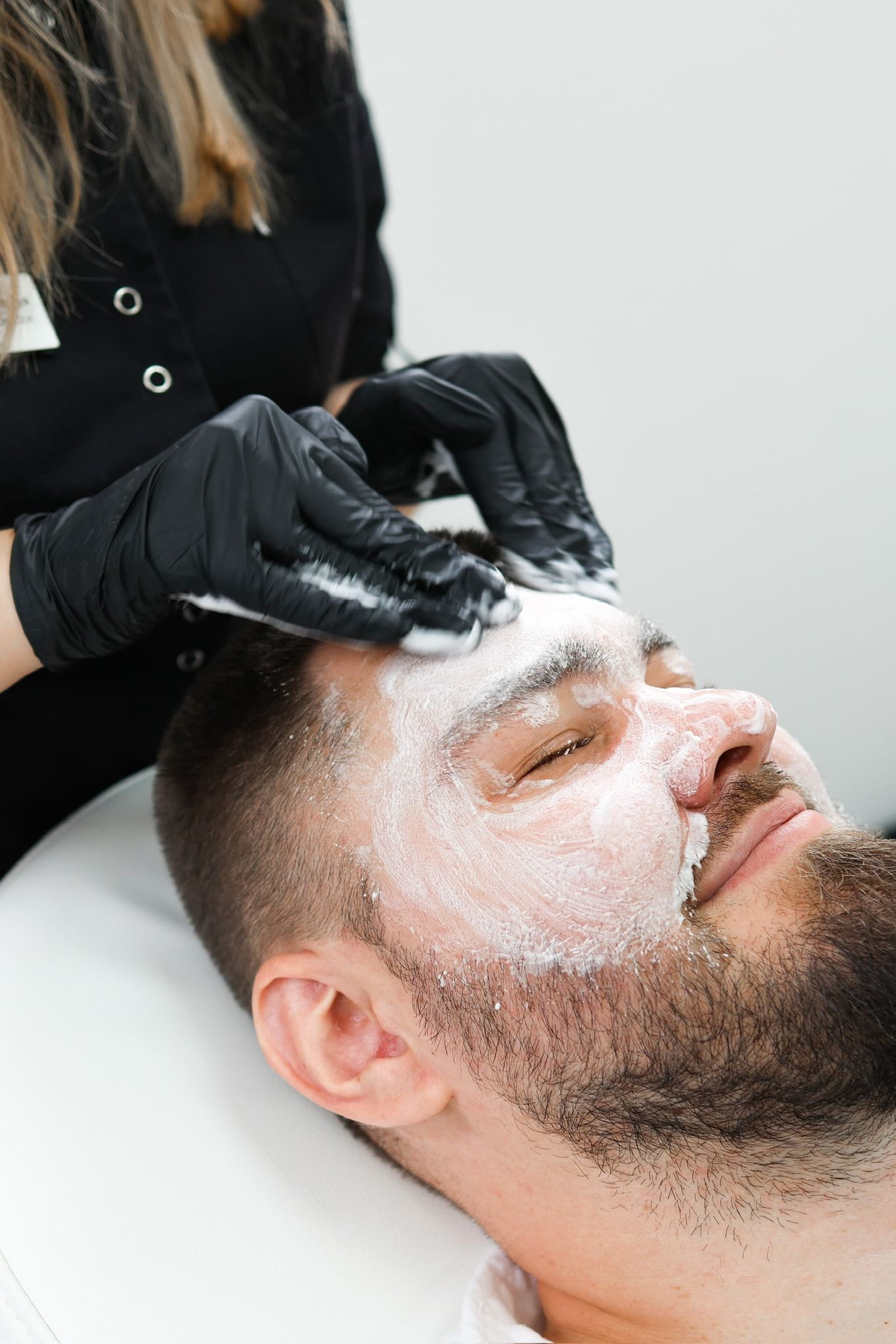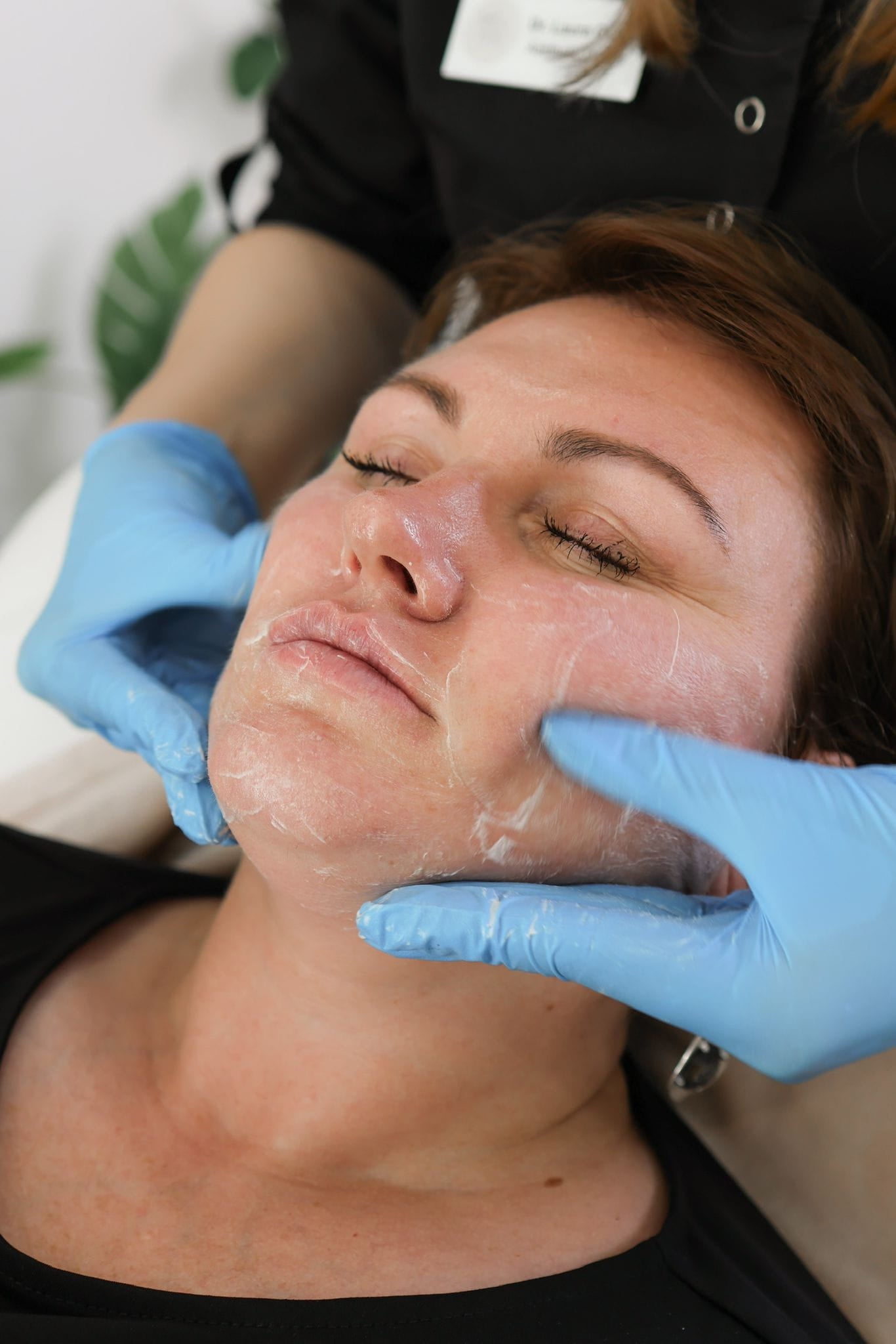What are Crows Feet?
Crows feet are tiny wrinkles that form around the outer corners of the eyes. These fine lines become more prominent with age as the skin loses elasticity and facial muscles contract repeatedly over time. Factors like sun exposure, smoking, and dehydration can also contribute to their appearance.
Symptoms and Causes of Crows Feet
Crows’ feet are small wrinkles that appear at the outer corners of your eyes. They develop as the skin around your eyes naturally loses its elasticity with age. Facial muscle movements, particularly those involved in smiling and squinting, also play a role in their formation.
While aging is a primary cause, other factors can contribute to crows’ feet. Excessive sun exposure damages collagen and elastin fibers, leading to premature wrinkling. Smoking accelerates skin aging by reducing blood flow and hindering the skin’s ability to repair itself. Dehydration also contributes to dryness and accentuates wrinkles.
Benefits of Botox for Crows Feet
Botox injections can effectively minimize the appearance of crows feet in Belgravia, London. By temporarily paralyzing the muscles responsible for wrinkle formation around the eyes, Botox smooths out these fine lines, creating a more youthful and refreshed look.
The benefits of Botox for crows feet are numerous. It offers a non-surgical, minimally invasive approach to wrinkle reduction, avoiding the downtime and risks associated with surgical procedures. Results typically last for several months, providing a noticeable improvement in the appearance of crow’s feet. Additionally, Botox can prevent new wrinkles from forming by reducing muscle activity.
Botox Procedure for Crows Feet
Crows feet are small wrinkles that appear at the outer corners of your eyes. They develop as the skin around your eyes naturally loses its elasticity with age. Facial muscle movements, particularly those involved in smiling and squinting, also play a role in their formation.

While aging is a primary cause, other factors can contribute to crows’ feet. Excessive sun exposure damages collagen and elastin fibers, leading to premature wrinkling. Smoking accelerates skin aging by reducing blood flow and hindering the skin’s ability to repair itself. Dehydration also contributes to dryness and accentuates wrinkles.
Botox injections can effectively minimize the appearance of crows feet in Belgravia, London. By temporarily paralyzing the muscles responsible for wrinkle formation around the eyes, Botox smooths out these fine lines, creating a more youthful and refreshed look.
The benefits of Botox for crows feet are numerous. It offers a non-surgical, minimally invasive approach to wrinkle reduction, avoiding the downtime and risks associated with surgical procedures. Results typically last for several months, providing a noticeable improvement in the appearance of crow’s feet. Additionally, Botox can prevent new wrinkles from forming by reducing muscle activity.
Recovery and Results
Crows feet are small wrinkles that appear at the outer corners of your eyes. They develop as the skin around your eyes naturally loses its elasticity with age. Facial muscle movements, particularly those involved in smiling and squinting, also play a role in their formation.
While aging is a primary cause, other factors can contribute to crows’ feet. Excessive sun exposure damages collagen and elastin fibers, leading to premature wrinkling. Smoking accelerates skin aging by reducing blood flow and hindering the skin’s ability to repair itself. Dehydration also contributes to dryness and accentuates wrinkles.
Botox injections can effectively minimize the appearance of crows feet in Belgravia, London. By temporarily paralyzing the muscles responsible for wrinkle formation around the eyes, Botox smooths out these fine lines, creating a more youthful and refreshed look.
Recovery after a Botox treatment for crows’ feet is quick and easy. There is minimal downtime, and you can typically resume your normal activities immediately. However, it’s important to avoid rubbing or massaging the treated area for a few days to prevent the Botox from spreading.
Results from Botox injections for crows feet are generally visible within a few days and continue to improve over the following weeks. The effects typically last for three to six months, after which touch-up treatments can be scheduled to maintain the desired results.
Cost of Botox for Crows Feet in Belgravia
The cost of Botox for crows feet in Belgravia can vary depending on factors such as the number of units used and the practitioner’s experience. On average, you can expect to pay between £200 to £400 per treatment.
Finding a Qualified Practitioner in Belgravia
Finding a qualified practitioner for Botox treatment in Belgravia is essential to ensure safe and effective results. Begin your search by asking friends or family for recommendations. Online resources like Grace Belgravia Google Maps, Yelp, or the British Association of Aesthetic Plastic Surgeons (BAAPS) can provide listings of practitioners in the area.
When evaluating potential practitioners, consider their qualifications, experience, and patient reviews. Look for board-certified medical professionals with specialized training in Botox injections. Checking online reviews can offer insights into other patients’ experiences and satisfaction levels.
During your initial consultation, discuss your concerns and desired outcomes with the practitioner. Ask about their treatment protocols, pricing, and any potential risks or side effects. A reputable practitioner will take the time to listen to your needs and provide you with a personalized treatment plan.
Dermal Fillers
%h2% Dermal Fillers
Dermal fillers are gel-like substances injected into the skin to smooth wrinkles, plump up lips, or augment facial contours.
They work by adding volume beneath the surface of the skin, effectively filling in creases and restoring lost fullness. Commonly used dermal fillers include hyaluronic acid (HA), a naturally occurring substance found in our bodies that attracts and retains moisture.
Dermal fillers offer a non-surgical alternative to achieving noticeable cosmetic enhancements. They provide immediate results, with minimal downtime and discomfort.
Various types of dermal fillers are available, each suited for different purposes. HA fillers are versatile and can address a range of concerns, from fine lines and wrinkles to deep folds and volume loss.
Chemical Peels
%h2% Chemical Peels
Chemical peels use a chemical solution to exfoliate the top layers of skin, revealing smoother, brighter skin underneath. There are different types of chemical peels, ranging from superficial to deep, each targeting specific skin concerns.
Superficial peels, often using alpha-hydroxy acids (AHAs), address mild imperfections like fine lines, wrinkles, and uneven pigmentation. Medium-depth peels, with trichloroacetic acid (TCA), penetrate deeper to treat acne scarring, moderate wrinkles, and hyperpigmentation. Deep peels, involving phenol, are reserved for severe skin concerns and require more downtime.
Chemical peels can improve the overall appearance of the skin by reducing the appearance of blemishes, fine lines, wrinkles, and age spots. They also stimulate collagen production, leading to firmer and smoother skin over time.
Risks and Considerations
While Botox offers a popular solution for minimizing the appearance of crows’ feet, it’s essential to consider potential risks and considerations before undergoing treatment. Like any medical procedure, Botox carries some inherent risks, including bruising, swelling, and temporary drooping or asymmetry of the eyelid. It is crucial to choose a qualified and experienced practitioner who understands facial anatomy and injection techniques to minimize these risks.
Potential Side Effects
Potential side effects associated with Botox injections for crows’ feet are generally mild and temporary. These may include bruising, swelling, redness, or tenderness at the injection site. In rare cases, more serious side effects such as drooping eyelids or eyebrow asymmetry can occur if the Botox is not administered correctly.
It’s important to discuss any pre-existing medical conditions or medications you are taking with your practitioner before undergoing Botox treatment, as certain conditions may contraindicate its use. For example, individuals with neuromuscular disorders like myasthenia gravis should avoid Botox injections.
Pregnant and breastfeeding women are also advised to consult their doctor before considering Botox treatment.
Patients should be aware that the effects of Botox are temporary and typically last for three to six months. Regular treatments may be required to maintain the desired results.
Contraindications for Botox
Botox is a popular choice for minimizing the appearance of crows feet, but potential risks and contraindications must be considered.
Potential side effects can include bruising, swelling, redness, or tenderness at the injection site. In rare cases, more serious side effects like drooping eyelids or eyebrow asymmetry may occur if the Botox is not administered correctly.
It’s important to discuss any pre-existing medical conditions or medications you are taking with your practitioner before undergoing treatment as certain conditions can contraindicate its use. For example, individuals with neuromuscular disorders like myasthenia gravis should avoid Botox injections. Pregnant and breastfeeding women are also advised to consult their doctor before considering Botox treatment.
Keep in mind that the effects of Botox are temporary and typically last for three to six months. Regular treatments may be required to maintain the desired results.
Maintaining Results
While Botox offers a popular solution for minimizing the appearance of crows’ feet, it’s essential to consider potential risks and considerations before undergoing treatment. Like any medical procedure, Botox carries some inherent risks, including bruising, swelling, and temporary drooping or asymmetry of the eyelid. It is crucial to choose a qualified and experienced practitioner who understands facial anatomy and injection techniques to minimize these risks.
Potential side effects associated with Botox injections for crows’ feet are generally mild and temporary. These may include bruising, swelling, redness, or tenderness at the injection site. In rare cases, more serious side effects such as drooping eyelids or eyebrow asymmetry can occur if the Botox is not administered correctly.
It’s important to discuss any pre-existing medical conditions or medications you are taking with your practitioner before undergoing Botox treatment, as certain conditions may contraindicate its use. For example, individuals with neuromuscular disorders like myasthenia gravis should avoid Botox injections. Pregnant and breastfeeding women are also advised to consult their doctor before considering Botox treatment.
Patients should be aware that the effects of Botox are temporary and typically last for three to six months. Regular treatments may be required to maintain the desired results.

Lip Filler Injections: Everything You Need to Know About Lip Augmentat
Tired Eyes Treatments: Tear Trough Fillers, Ultherapy, Microneedling,- It’s Me & You
Discover the latest innovations
Reserve Your Treatment Appointment
A Glossy Life Blog
- Sculptra Surrey – Collagen Stimulation Therapy Near Addington, Surrey - November 17, 2025
- Retinol Peel Near Merton, Surrey - November 15, 2025
- Retinol Peel Near Betchworth, Surrey - November 12, 2025
